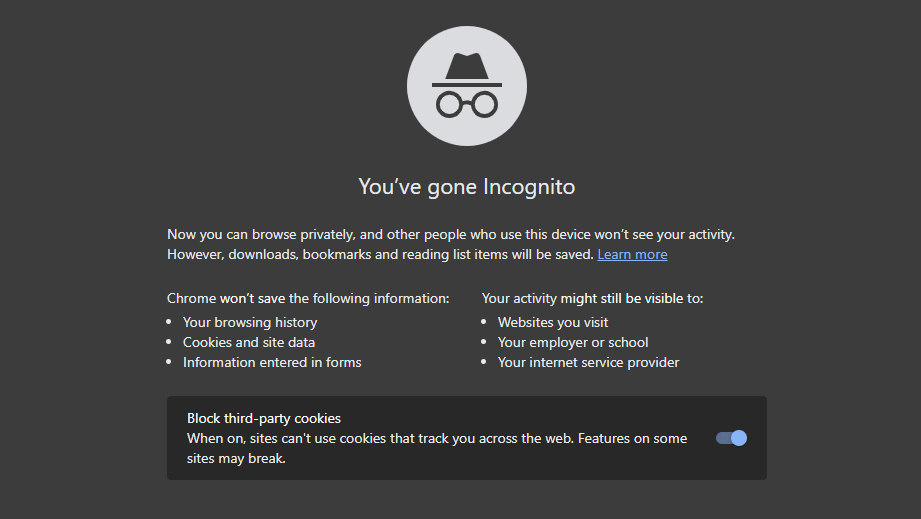
In an era where digital privacy is increasingly precious, millions turn to Incognito Mode or Private Browsing to shield their online activities from prying eyes. The allure is undeniable — the promise that what you do online remains secret, invisible even to those who might access your device. But beneath this veneer of security lies a sobering reality: Incognito Mode is far from a foolproof privacy shield. The very secrets users believe hidden are often still visible to various parties, from Internet Service Providers to employers and even governments.
The Reality Behind Incognito Mode
The term “Incognito Mode” evokes images of invisibility cloaks and secret tunnels — but in truth, it is more of a local privacy tool rather than a global invisibility device. When activated, Incognito Mode primarily prevents your browser from saving certain types of data such as your browsing history, cookies, and cached files once you close the window. This means that if someone picks up your device after your session, they won’t find your browsing history saved in the normal locations.
However, this local privacy does not extend to your network or the websites you visit. The moment your data leaves your device, it is vulnerable to tracking by your ISP, the websites themselves, and any network administrators monitoring your connection. This disconnect between perceived and actual privacy is the crux of why relying solely on Incognito Mode can lead users into a false sense of security.
Who Can Still See Your Activity?
The first group to understand here is your Internet Service Provider. ISPs have the technological capability and, in many cases, the legal obligation to monitor and log your internet traffic. This logging happens regardless of whether you use normal or incognito browsing modes. They see the IP addresses you connect to, the domains you visit, and the amount of data transmitted.
Beyond ISPs, network administrators at workplaces, schools, or public Wi-Fi hotspots can easily monitor traffic traversing their networks. These entities can use firewall logs, proxy servers, or other network monitoring tools to capture your browsing data, even if you’re using Incognito Mode.
Websites themselves employ sophisticated tracking methods that go beyond cookies, such as browser fingerprinting, which collects unique data about your browser and device configuration to recognize you upon return visits. These trackers don’t rely on your local history or cookies alone, rendering Incognito Mode ineffective against their surveillance.
Lastly, government surveillance programs, which in some countries actively monitor citizens’ internet activities, have no technical barrier against Incognito browsing. Using Incognito Mode offers no protection against such extensive and invasive monitoring.
The Misconception That Incognito Mode Is a Privacy Panacea
Many users mistakenly believe Incognito Mode offers comprehensive privacy protection. This misconception often leads to risky behaviors such as logging into multiple accounts, conducting sensitive searches, or accessing restricted content, all under the impression that their activities are hidden.
For example, many people use Incognito Mode to shop online, believing that their payment information or shopping habits will be safeguarded. In truth, the security of these transactions depends on HTTPS encryption protocols rather than the browsing mode. Similarly, students or employees who try to bypass network restrictions via Incognito Mode overlook the fact that network logs will still record the sites they access.
Moreover, some users expect that Incognito Mode will shield them from targeted advertisements. While it is true that cookies and site data are deleted after the session, advertisers often use IP addresses and sophisticated tracking scripts that function regardless of browser mode, rendering this expectation ineffective.
How Incognito Mode Really Works: A Technical Dive
Understanding the inner workings of Incognito Mode can clarify its limitations. When you open a new Incognito window, your browser creates a temporary session that isolates cookies, browsing history, and site data from your regular browsing session. This session’s data is stored temporarily and discarded once the window closes.
However, your IP address remains the same unless you use additional privacy tools like VPNs or proxies. Your device continues to send identifiable information such as the user agent string, screen resolution, installed fonts, and other characteristics that websites can use for fingerprinting.
In addition, many browsers do not block third-party trackers by default in Incognito Mode. These trackers can still profile your browsing behavior during the session.
Steps Toward Real Online Privacy
Recognizing the limitations of Incognito Mode is the first step toward protecting your digital footprint more effectively. To achieve higher levels of privacy, consider combining Incognito Mode with other privacy tools and practices.
A Virtual Private Network (VPN) encrypts your internet connection and masks your IP address, making it significantly harder for ISPs or network administrators to track your online activities. Choosing privacy-focused browsers like Tor or Brave, which block trackers by default and route traffic through anonymous networks, further enhances anonymity.
Adjusting browser settings to block third-party cookies, regularly clearing browsing data, and using privacy extensions can reduce exposure to trackers.
Finally, understanding the value of good password hygiene and securing your accounts with two-factor authentication reduces the risk of unauthorized data access.
Digital Footprints: Can You Ever Truly Delete Them?
The desire to erase one’s digital footprints is an understandable reaction to privacy concerns. However, completely deleting your online history is complicated by the many layers through which data is stored and tracked.
When you clear your browser history or delete cookies, this action only affects data stored on your local device. Copies of your activities likely exist on remote servers — Google keeps search histories, websites log visitor data, and ISPs retain records.
For those seeking to minimize traces, it’s important to delete browser histories, clear caches, and remove autofill data regularly. Using the privacy controls provided by search engines to delete stored activity helps but is not a silver bullet.

Awareness about app permissions is crucial as many applications access browsing data or track behavior. Limiting these permissions reduces data collection.
At a broader level, adopting privacy-conscious behaviors such as minimizing account creation, using pseudonymous profiles, and avoiding unnecessary data sharing strengthens your digital privacy.
The Cost of Overreliance on Incognito Mode
Putting blind trust in Incognito Mode can lead users to make decisions that inadvertently expose their personal information. The false assumption of anonymity may encourage risky online behavior such as logging into sensitive accounts on shared devices or conducting private research on controversial topics, believing these remain invisible.
This misplaced trust can be exploited by malicious actors. Cybercriminals, hackers, or even governments might capitalize on users’ ignorance of Incognito Mode’s limits to harvest data or monitor behavior.
The onus lies on users to educate themselves about online privacy and recognize that privacy is not a binary state but a spectrum requiring multiple layers of protection.
Privacy in the Age of Data Monetization
One of the driving forces behind the extensive tracking of user data is the lucrative online advertising industry. Data about your browsing habits, preferences, and demographics is a valuable commodity sold to advertisers to deliver targeted ads.
While Incognito Mode stops your browser from storing cookies locally, it does not prevent the data from being collected or sold during your browsing session. This nuance often escapes casual users who mistakenly believe their activity isn’t being recorded at all.
Legislation such as the GDPR in Europe or the CCPA in California seeks to give users more control over their data, but enforcement and compliance vary widely.
The Future of Online Privacy Tools
The shortcomings of Incognito Mode highlight a growing demand for more robust privacy tools. Innovations such as decentralized browsing, blockchain-based identity management, and enhanced encryption methods are gaining traction.
Privacy-centric search engines like DuckDuckGo offer alternatives that do not track users or store histories. Similarly, browser developers continue to integrate advanced tracker blocking and fingerprint resistance into their products.
Users are encouraged to stay informed about emerging tools and best practices to maintain privacy in an increasingly surveilled digital landscape.
Conclusion: Incognito Mode Is Not a Magic Cloak
While Incognito Mode offers a measure of privacy by preventing local history retention, it does not equate to anonymity or full protection from tracking. Users must understand that their activities remain visible to ISPs, websites, network administrators, and governments.
True online privacy requires a multifaceted approach involving VPNs, privacy-focused browsers, encrypted connections, and responsible digital habits. Educating oneself on these topics is essential in an age where data is currency and privacy a precious, vulnerable commodity.
Ultimately, Incognito Mode is a helpful but limited tool — a first step, not a final destination, on the journey to digital privacy.

